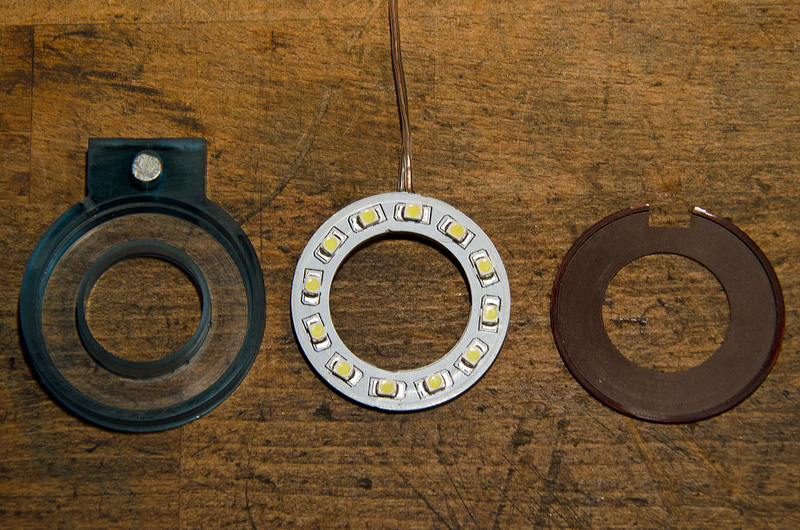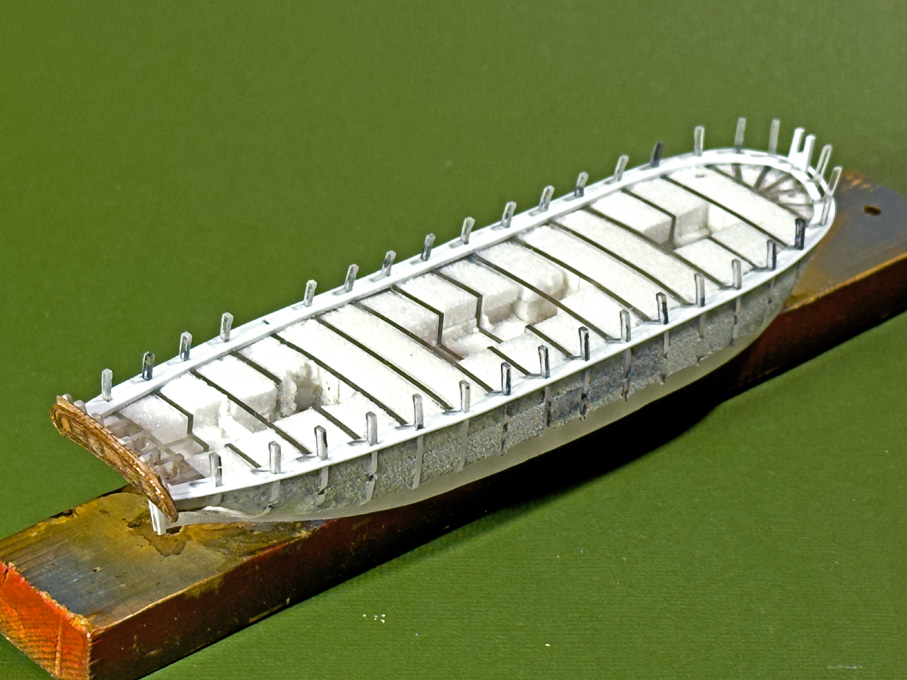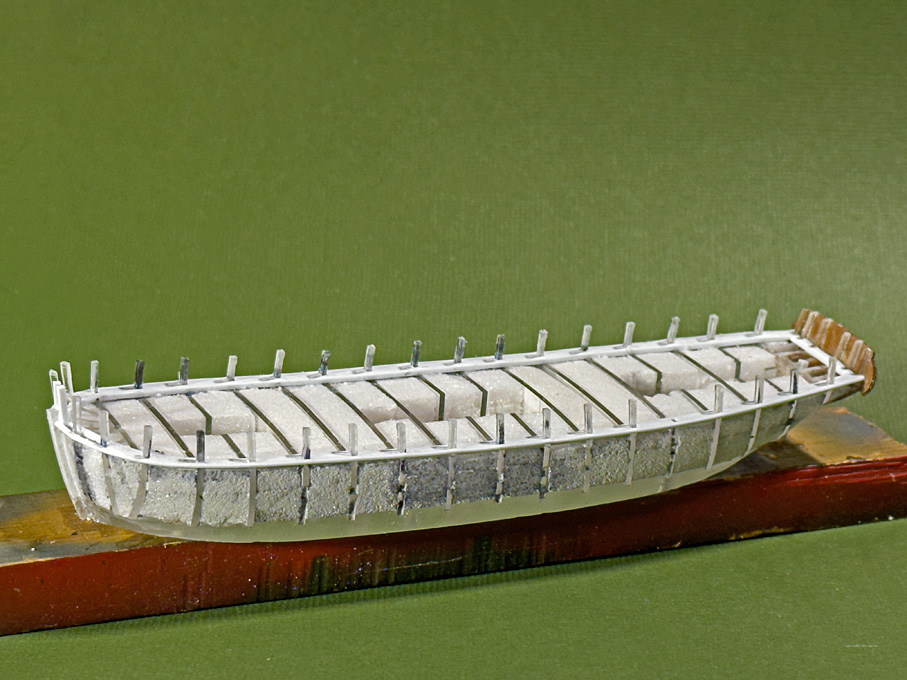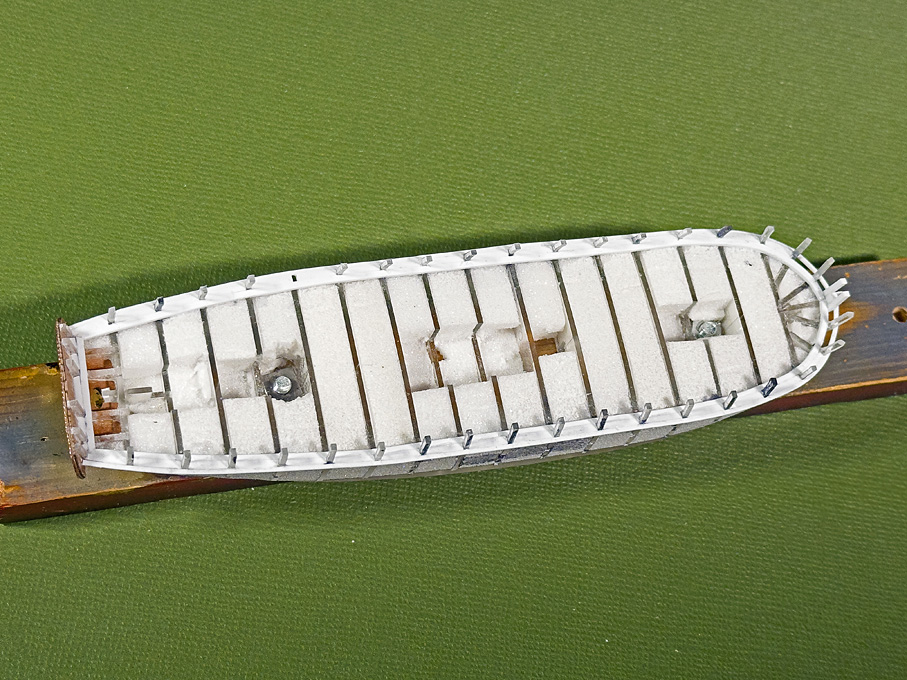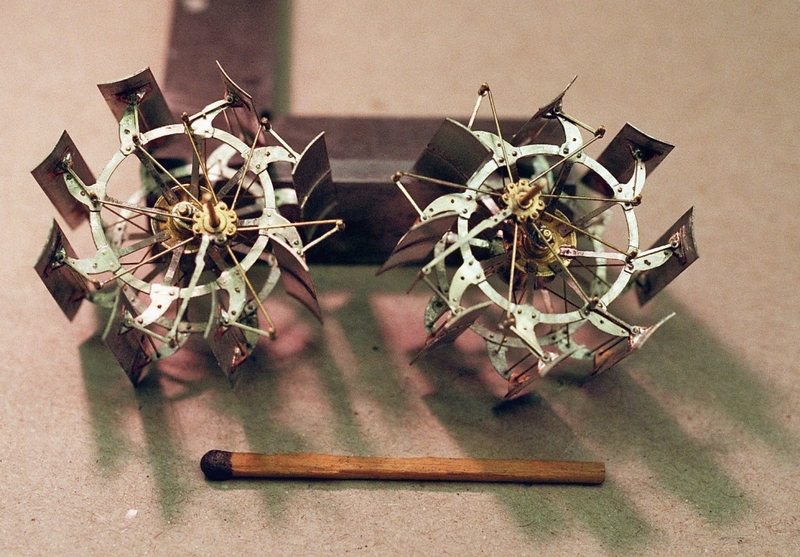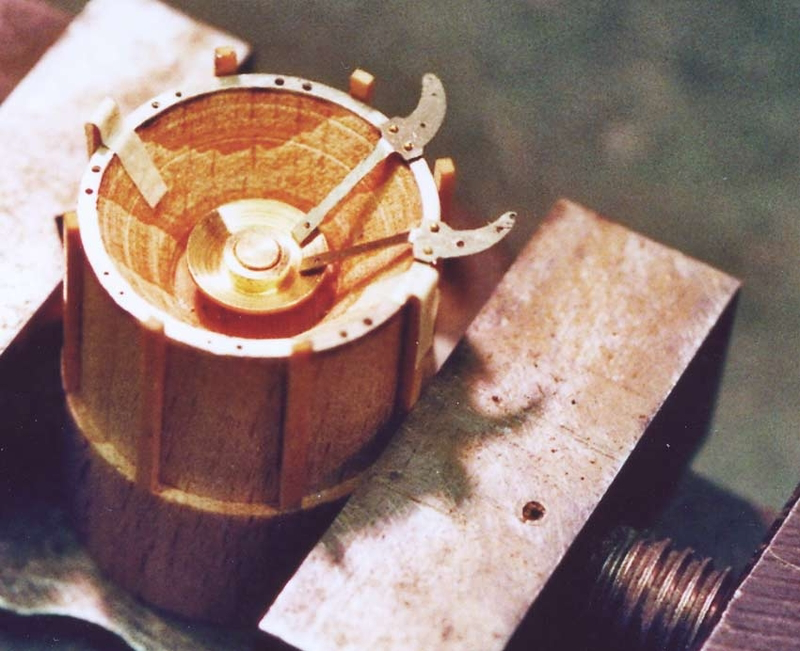-
Posts
6,638 -
Joined
-
Last visited
Content Type
Profiles
Forums
Gallery
Events
Everything posted by wefalck
-

scissors, shears, cutters for rigging
wefalck replied to palmerit's topic in Modeling tools and Workshop Equipment
Objectively, there is no reason not to use it in the house. We use only tiny quantities and would not keep the container open for long times. Of course, if I were to treat a silver chandelier or something like that, I would like to have good ventilation ... However, the law is the law. You would need to find a fast-drying varnish based on an organic solvent. The point is relatively low viscosity, good penetration because of low surface tension, good wetting properties (particularly when working with man-made fibre ropes), and easy reversibility of the bond. These are all properties that do not really apply to acrylics or PVA glue. I have never used the latter two for this purpose for those reasons. -
I gather this would be a colour often referred to as 'duck egg blue'. Adding a wash of ochre could get you there or mixing it up for another coat. Adding orange possible makes it too dark. I would assume that the owner's would put on any colour they could lay their hands on (like the famous houses in the La Boca area of Buenos Aires) and that took their fancy. Black hulls with white trims has been the fashion since the middle of the 19th century. Black and white are also among the cheapest colours you can get. It was only after WW2, when synthetic pigments made it possible to have the same price for all colours.
- 312 replies
-
- Chile
- Latin America
-
(and 6 more)
Tagged with:
-

scissors, shears, cutters for rigging
wefalck replied to palmerit's topic in Modeling tools and Workshop Equipment
I am using so-called zapon varnish, which is fast-drying and remain a bit elastic. It is basically invisible and does not add volume to knots etc. Old-time nail-varnish, not the modern acrylic version, is/was essentially the same. The main use of zapon varnish is to coat silver- or brass-ware to prevent it from tarnishing. As the USA seems to have overtight regulations on organic solvents in some states, it may be difficult to find. Unlike white glue or acrylic varnishes, this varnish can be easily redissolved with a drop of acetone, if you need to adjust the knot. Not sure, why you want to cut close to a knot. Normally, when a rope is tied to something with a knot, there is a 'tail', the length of which depends on the situation. The only situation I can think of for cutting close would be when belaying to a pin and you want to prepare the coil separately. Another situation for making close cuts would be after splicing. Here, the varnish prevents the strands from slipping out after being cut back closely. -
Interesting feature, these push-knees. That is something rarely seen in Europe on tugs until a few decades ago. I would have thought that the driver would have been tied up alongside for manoeuvering it around and then tied up to the shore and two anchors laid out at the rear to keep it in position and to move it along for the next pile.
- 732 replies
-
- Lula
- sternwheeler
-
(and 1 more)
Tagged with:
-

BR-18 Locomotive by Greg Davis - OcCre - 1/32
wefalck replied to Greg Davis's topic in Non-ship/categorised builds
In case you need supporting information, there are several surviving examples, for instance in the Deutsche Museum in Munich. This Wikipedia page gives an overview over S3/6: https://de.wikipedia.org/wiki/Bayerische_S_3/6. It's in German, but that shouldn't be a problem with GoogleTranslator. I was surprised to see a Bavarian locomotive in blue in did a bit of search on German fora. It seems that they were painted for unknown reasons in blue for a number exhibitions around Europe, but blue was never a regular livery. -
Must be a specialist, who sees any problem with the stern ... I think that the 'garlands' would be a job for a laser-cutter or for photo-etching in brass ... or may be 3D-printing to obtain some plasticity.
- 77 replies
-
- Royal Yacht
- card
-
(and 1 more)
Tagged with:
-
There seems to be a certain parallel to the boats from Norway that tended to rigged with a single square sail right into the 20th century. As has been shown by the replicas of Viking boats, when using bulins on the square-sails, they can go quite high into the wind. Looking forward to further progress ...
- 139 replies
-
- ancre
- Bateau de Lanveoc
-
(and 2 more)
Tagged with:
-

Sherline Mill Ring Light
wefalck replied to Some Idea's topic in Modeling tools and Workshop Equipment
It seems that 'warm' LEDs actually have a layer of yellow, transparent varnish on them. That's why they a 10% lower output in lumen, compared to the cold white ones. -

Sherline Mill Ring Light
wefalck replied to Some Idea's topic in Modeling tools and Workshop Equipment
Another option is, if you have a lathe with a face-plate, to cut a ring-slot with a boring tool. This is what I did. -

Sherline Mill Ring Light
wefalck replied to Some Idea's topic in Modeling tools and Workshop Equipment
Well engineered! It's only a pity that these 'angel's eyes' for cars only come in this unpleasant cold white. I made a similar one for my antique mill some ten years ago. As it is cast iron, I attached the ring-light with a neodynium magnet. -
Thanks for the 'Likes' ! ************************ Quick update In between travels I managed to attach the outboard part of the covering boards: I also scraped all the pieces to the same level, but some of the joints will need a bit of filling with putty to give a uniform appearance of a single board. To be continued
-
I think I would have had a cardiac arrest while the first paint went on ... Loosk like my favourite green, British Racing Green or RAL 6007 Bottle Green. Difficult to get these days, but I had it mixed up in acrylics for the paint-jobs on my machines. And I think this is enough paint to give a balance between the realistic impression of the real thing, while preserving the beautiful planking and varnishing job.
-
Because of the B/W photographs, we tend to have a much more dim impression of the time between 1850 and 1950, but in reality, the world was quite colourful. Perhaps not as colourful as after the aesthetically sometimes questionable colour-explosion during the later 1960s and the 1970s though. However, coloured paint was expensive, so 'simple' and lightfast colours, such as black, green, red-ochre and the likes dominated. It was also a matter of fashion: during the 1830s to 1850s (sea)ships were painted with quite a bit of colour, but thereafter black and white dominated. I gather, it is your aesthetic choice, Keith ...
- 732 replies
-
- Lula
- sternwheeler
-
(and 1 more)
Tagged with:
-
Brass parts to be handled other than for assembly probably require an etching primer. My models are barely handled, so I am ok with painting directly on brass. However, I mainly spray-paint, which makes it easier. Using a solvent-based varnish as primer might go a long way to facilitate brush-paining with acrylics, because bare brass has a slightly hydrophobic surface, regardless how well you clean it. Other people actually use paper, cardboard or styrene for metal-bands, which is fine as long as there is no load on these parts.
- 312 replies
-
- Chile
- Latin America
-
(and 6 more)
Tagged with:
-
Sorry, to have killed your linoleum-dream 🫢 I gather you have to teleport LULA then into the 1900s or so.
- 732 replies
-
- Lula
- sternwheeler
-
(and 1 more)
Tagged with:
-

Deck Cleats
wefalck replied to hof00's topic in Discussion for a Ship's Deck Furniture, Guns, boats and other Fittings
The size of cleats need to be adapted to the size of line to be belayed on them. Even on small boats the cleats for sheets can be anything between 500 mm and 700 mm long. The ones that double also as cleats for mooring lines may span two bulwark stanchions. -
If linoleum, I would have thought of plain so-called Battleship-Linoleum in iron-oxide red ... However, linoleum wasn't invented until the mid-1860s by Walton, who remain the main producer (through subsidiaries) in Europe. Some years ago I did quite extensive research on the possible use of linoleum on the original configuration of SMS WESPE, but concluded that 1876 was too early. Shipboard use didn't really commence before the 1880s. Another option is wax-cloth, forerunner and inspiration for linoleum. I believe waxed cloth was used as cheap floor-covering from around the 1840s, but doubt that it would have stood up to rough shipboard use. It's the same kind of stuff they still sell as tablecloth today. To be honest, I think the most realistic bet would be plain wooden flooring.
- 732 replies
-
- Lula
- sternwheeler
-
(and 1 more)
Tagged with:
-
The linoleum looks like the captain is a lady 😁 ...
- 732 replies
-
- Lula
- sternwheeler
-
(and 1 more)
Tagged with:
-

Deck Cleats
wefalck replied to hof00's topic in Discussion for a Ship's Deck Furniture, Guns, boats and other Fittings
I gather, learning to sail helps ... in many cases you the business end partly around a cleat, pin or spill head, because the friction helps you to control the line and takes out jerks. There is also a difference between 'belaying' and 'fastening'. Belaying end always refers to the business end of a line, the one that is handled. The other end is 'made fast', e.g. with a shackle through a spliced eye to an eye-bolt. -

Deck Cleats
wefalck replied to hof00's topic in Discussion for a Ship's Deck Furniture, Guns, boats and other Fittings
Indeed, a tackle or at least a single block. -
That's called a 'jig' and is used in manufacturing and assembly all the time ... one can also use cardboard for jigs that don't have to be terribly precise or carry loads.
About us
Modelshipworld - Advancing Ship Modeling through Research
SSL Secured
Your security is important for us so this Website is SSL-Secured
NRG Mailing Address
Nautical Research Guild
237 South Lincoln Street
Westmont IL, 60559-1917
Model Ship World ® and the MSW logo are Registered Trademarks, and belong to the Nautical Research Guild (United States Patent and Trademark Office: No. 6,929,264 & No. 6,929,274, registered Dec. 20, 2022)
Helpful Links
About the NRG
If you enjoy building ship models that are historically accurate as well as beautiful, then The Nautical Research Guild (NRG) is just right for you.
The Guild is a non-profit educational organization whose mission is to “Advance Ship Modeling Through Research”. We provide support to our members in their efforts to raise the quality of their model ships.
The Nautical Research Guild has published our world-renowned quarterly magazine, The Nautical Research Journal, since 1955. The pages of the Journal are full of articles by accomplished ship modelers who show you how they create those exquisite details on their models, and by maritime historians who show you the correct details to build. The Journal is available in both print and digital editions. Go to the NRG web site (www.thenrg.org) to download a complimentary digital copy of the Journal. The NRG also publishes plan sets, books and compilations of back issues of the Journal and the former Ships in Scale and Model Ship Builder magazines.




